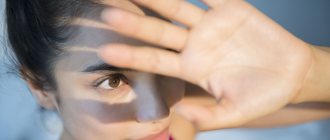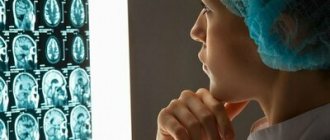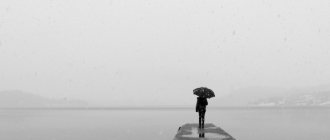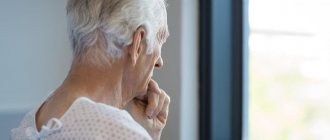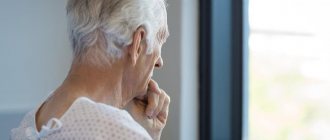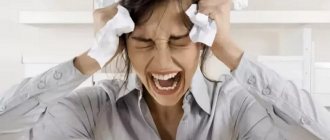Information about a number of other diseases: Basal cell carcinoma, Graves' disease, Balanitis, Delirium tremens, Beriberi, Infertility in women, Infertility in men, Insomnia, Rabies, Blepharitis, Myopia, Bundle block, Addison's disease, Alzheimer's disease, Bowen's disease, Von Willebrand's disease, Gunter's disease, Cushing's disease, Crohn's disease, Parkinson's disease.
What is Gunther's disease?
Gunther's disease is a fairly rare hereditary disease, during which disruptions in pigment metabolism and accumulation of porphyrin in the soft tissues begin. This substance has a nitrogen-containing pigment, included in hemoglobin, which gives blood cells the red tint familiar to people. The process begins development in the red bone marrow, interconnected with the action of red blood cell synthesis.
Therapy
Heliophobia requires professional help, especially at the initial stage of treatment. Treatment of the disease is carried out on an outpatient basis. Hospitalization is rarely necessary when the situation reaches a critical point.
Treatment of the disorder primarily comes down to the use of psychotherapeutic methods :
- Cognitive behavioral therapy uses the method of immersing the client in a traumatic situation and teaching how to get out of it using rational methods. Immersion, that is, access to the sun, is carried out gradually.
- Psychoanalysis will help reveal the underlying cause of the disorder and get to the bottom of it.
- Hypnosis is considered a particularly effective treatment for phobias. In a short period of time, it allows you to eradicate the problem without much effort for the client. By putting a person into a trance state, the specialist gets the opportunity to work with his unconscious. The hypnotherapist is thus able to influence a person’s ingrained attitudes acquired in childhood, identify traumatic events, change the patient’s attitude towards fear and help form an adequate model of behavior. For the client, this method is considered gentle because it does not cause tension or anxiety, and the treatment process is hidden from the patient’s consciousness. He is given the opportunity only to enjoy the result.
- In the compensated stage of the disease, auto-training and relaxation activities are available for patients.
Drug treatment is used in some cases. For depression, antidepressants are prescribed. To relieve panic attacks, the patient must be prescribed anti-anxiety medications. To relieve emotional stress, sedatives are used.
Most heliophobes take vitamin D to smooth out developing hypovitaminosis or compensate for it with nutrition.
Heliophobia is a mental disorder with a favorable prognosis. Stopped at an early stage, the disease goes away without a trace. The advanced form is dangerous because it causes disturbances in the mental activity of the patient.
How to detect?
The first symptoms indicating the presence of Gunther's disease begin to appear already in the first year of the baby's life. In special situations, they may occur several years later. The main symptoms of the presented process include:
- Scarlet color of urine, caused by a large amount of pigment in the body;
- Colored tooth enamel, which is evidence of the deposition of porphyrins on the teeth;
- Chronic photosensitivity is a process during which a burn may appear in the patient’s body due to the penetration of ultraviolet radiation through glass. Causes rashes;
- High level of hair on the epidermis;
- Significant growth of the liver and spleen;
- Destruction of red blood cells in the circulatory system.
Don't get confused!
Heliophobia, as a separate phobia, is formed as a mental disorder, devoid of any real threat from health.
Do not confuse a pure phobia with a fear of light caused by specific diseases:
- Keratoconus is an eye disease. The action of sunlight causes a special, increased sensitivity.
- Migraine – bright daylight provokes headaches.
- Xeroderma pigmentosum - the slightest exposure to ultraviolet radiation forms a burn on unprotected skin.
- Gunther's disease. This is the name of a genetic disease, which, as in the previous pathology, causes skin changes in contact with ultraviolet rays in the form of ulcers. Subsequently, scars remain in their place.
- Porphyria - an increased content of porphyrins in the body provokes multiple pathological changes, including photodermatosis. It manifests itself as hyperpigmentation, the formation of ulcers, erosions, and cracks in the skin.
In all of the above cases, heliophobia is justified, bringing real bodily suffering to the patient. For medical purposes, these pathologies even require photorestriction. They cannot be regarded as mental heliophobia, which should be taken into account when diagnosing the disease.
Photophobia can also occur as part of other mental disorders. A typical example is schizophrenia. However, in this case, the phobia is unrealistic: the patient is afraid to go out into the sun, justifying this by the fact that he will turn into a black man.
Another patient had a dream where his loved ones were afraid to go out into the world because they would shrink in size. The dream provoked the development of sunphobia in him, which is why the patient radically limited his exit from the house for a long time.
How to cure?
Currently, scientists have come to the conclusion that it is impossible to fully recover from this condition. However, it is possible to reduce the number of relapses. In addition, doctors in some cases use bone marrow transplantation. Doctors advise people suffering from Gunther's disease to spend a minimum amount of time in the sun. The following are used as braking:
- Nicotinic and ascorbic acid;
- Riboflavin;
- Cyanocobalamin.
What consequences can the disease lead to?
According to clinical data, such a disease can cause numerous metabolic problems in the patient’s body. All patients live for a short period of time.
Symptoms of heliophobia
The main symptom of the disease is limiting or completely avoiding sun exposure. At the same time, a person is almost constantly indoors during daylight hours and does not leave his home.
The severity of destructive behavior depends on the severity of the disorder. With a mild form of heliophobia, the patient still allows himself to go outside during daylight hours. But, of course, with a full arsenal of protective equipment: glasses protect your eyes, clothes are put on in such a way as to hide open areas of the body as much as possible. What remains uncovered is covered with auxiliary means: gloves, scarves, scarves, hats. In such equipment a person goes to work, to the store, anywhere.
In the initial stage of the disease, the individual goes outside during the day under an umbrella and applies sunscreen in large quantities.
As the process progresses, it causes the formation of avoidant behavior. People go out less and less during the day. It creates twilight in the apartment, protecting itself from the sun's rays: covering the windows with blinds and blankets. Selects work that requires night activity.
Panic attacks are a typical accompaniment of the disorder. In general, a heliophobe is an ordinary person, with a clear consciousness, sound thinking, and aware of the absurdity of his situation. But as soon as he inadvertently enters the insolation zone, consciousness seems to turn off. Stupor, panic and chaos ensues. The patient feels trapped. Attention is scattered, it is difficult to make a constructive decision. Tachycardia develops, a feeling of suffocation appears, trembling throughout the body, and cold sticky sweat appears. The condition is accompanied by unbearable headaches. Anxiety and fear are so pronounced that they provoke a powerful surge of adrenaline, which triggers all the symptoms of a panic attack. Nausea, vomiting, and loss of consciousness may occur. There is only one desire left: to run to safety.
You can help an alarmist by taking him into the shade if it is not possible to go indoors.
Manifestation of heliophobia
- All behavior of a person suffering from heliophobia is aimed at avoiding places illuminated by the rays of the sun. Being in a sunny area can cause a panic attack.
- Heliophobes prefer to leave the house only after sunset. In this regard, the sleep and wakefulness patterns are disrupted, the hormonal system malfunctions, and the production of an important night hormone, melatonin, decreases.
- Due to emotional stress, fear and constant expectation of negative consequences, a person begins to feel as if the sun is really physically pressing and burning.
- In an attempt to avoid the slightest exposure to ultraviolet radiation on the skin, the patient wears clothing that hides the body as much as possible.
Symptoms of the disease
The disease is psychological in nature, the exact cause of which is unknown. In essence, people suffering from a phobia have a psychological fear that the sun can cause physical harm to their well-being and health, so when exposed to the sun's rays they feel as if the light is pressing and burning.
The development of fear of the sun is influenced by the presence of diseases. These include: cataracts, melanoma, various eye pathologies, as well as the presence of other phobias, for example, agoraphobia. It refers to the fear of open areas. But most often, heliophobia develops as a symptom of an underlying disease - schizophrenia.
In special cases, the phobia appears as an independent disease; the patient experiences a feeling of anxiety when he is in the sun. It develops into a reluctance to go outside when the sun is shining. The person is constantly at home, with the windows tightly curtained. The biological rhythm changes (awake at night, sleeps during the day). All this can be accompanied by panic attacks:
- the rhythm of heartbeat and breathing increases;
- dizziness;
- nausea and vomiting;
- unjustified fear for one's health;
- the desire to run away and hide in a place without blades.
At the same time, the patient has unhealthy-looking and pale facial skin, which is accompanied by symptoms of hypovitaminosis (deformation of bones, teeth, caries, weight loss, muscle cramps, weakness, sweating).
This disease forces a person to be completely isolated from the outside world, and accordingly, the circle of communication with loved ones, relatives, and friends is narrowed, and difficulties appear with completing training. Without the sun, the synthesis of calciferol becomes more difficult , as a result of which many diseases appear, depression, incessant headaches, and a chronic feeling of fatigue develop.
Some tips
If a person who is afraid of the sun and sunlight finds himself on the street for certain reasons, during an attack of the disease it is necessary to take him to a darkened place or closed room, otherwise his health condition may worsen to the point of a hypertensive crisis, loss of consciousness, or severe arrhythmia.
To avoid relapse of heliophobia:
- it is necessary to avoid drinking energy drinks, alcoholic drinks, coffee;
- spend more time in sunlight, play sports;
- avoid stress and negative emotions;
- experiencing fear and anxiety to share with loved ones.
With timely, wise treatment, heliophobia can be fully recovered. And a properly selected course is the key to restoring physical and psycho-emotional health.
0
Relationship with other phobias
Heliophobia can provoke the development of agoraphobia, that is, fear of open space. A person who does not have special knowledge may confuse the fear of the sun with phengophobia. However, fengophobes are not afraid of the sun itself, but of solar exposure.
Heliophobia also has features similar to photophobia - the fear of light in general. All three disorders can be either independent diseases or interrelated.
In some cases, heliophobia is the result of cancerophobia - the fear of developing a cancerous tumor.
The danger of this phobia is that it leads to serious health problems. Without exposure to ultraviolet rays on the skin, the body does not produce vitamin D, therefore, calcium is not absorbed and bone tissue is not strengthened.
Without sunlight, the human immune system weakens significantly, and the removal of heavy metal salts from the body slows down.
Due to the lack of sunlight, the hormone serotonin is not synthesized, which negatively affects the emotional health of the heliophobe.
Ultraviolet radiation has antibacterial properties , so the lack of sunlight makes it more difficult for the body to cope with various wounds and damage to the skin. Lack of vitamins provokes severe headaches, constant physical malaise and depression.
Heliophobia also negatively affects a person's social activity . With a fear of the sun, people cannot live a full life, communicate with others, work or study.
Diagnosis and treatment of photophobia
Photophobia of the eyes cannot be treated without identifying and eliminating its cause. Ophthalmological specialists do not recommend self-diagnosis and self-medication, since the source of photophobia may be a serious illness that requires specialist intervention.
Diagnosis of fear of light
- Diagnostic conversation. The doctor determines at what moments photophobia of the eyes manifests itself, whether this damage is associated with exposure to sunlight, and whether the eyes react to artificial lighting. Additionally, the ophthalmologist clarifies the presence of concomitant diseases, finds out whether the patient takes medications, instills drops, etc.
- Ophthalmological examinations. Depending on the symptoms and general health of the patient, the doctor performs biomicroscopy, ophthalmoscopy, tonometry, and gonioscopy. The specialist may prescribe additional studies: ultrasound of the eyes, culture for bacteria, etc. Thanks to a thorough diagnosis, he can detect the source of infection, assess the condition of the anterior segment and fundus of the eye, the patency of the retinal vessels, etc.
- Neurological examinations. If photophobia is not associated with ophthalmological diseases, the patient is recommended to visit a neurologist, who may refer the patient for an MRI, Doppler ultrasound, or other examination.
Additionally, the ophthalmologist may recommend that the patient undergo examination by an endocrinologist, phthisiatrician or other specialist.
Treatment of fear of light
Photophobia can be treated immediately after diagnosis. Therapy usually includes:
- Treatment of the underlying disease. For example, a specialist can select medications to treat migraines, panic attacks, etc., prescribe drops to combat conjunctivitis, scleritis, dry eye syndrome, etc.
- Refusal of medications that provoke a fear of light, if this does not cause harm to health.
- Wearing sunglasses or photochromic lenses. The optometrist may recommend wearing them until the treatment produces results.
What is photophobia?
Squinting from the bright sun or closing your eyes for a few seconds when leaving a dark room to go outside is a normal reaction of the body. As a rule, a few minutes are enough to adapt to different lighting. But people suffering from photophobia do not get used to bright light even after some time. Discomfort can be caused not only by the sun, but also by light from fluorescent and other lamps, as well as normal lighting, in which the eyes of a healthy person feel comfortable.
Sensitivity to light can be chronic, or it can be temporary, associated with some event, such as injury.
Contrary to the opinion of many patients, photophobia is not an eye disease as such, but a signal that a person has an eye pathology or a disease of the nervous system.
The following symptoms may often occur along with photophobia:
- Cutting, burning, pain or other discomfort in the eyes.
- Tearing.
- Desire to squint even in dim light.
- Increase in pupil diameter.
- Redness of the eyes.
- Decreased visual acuity.
- Dry eye syndrome.
- Tired eyes.
- Flashes, flies, floating dots, blurred vision.
Fear of light can also be accompanied by other symptoms (they depend on the disease that provoked photophobia). Among them:
- headache, migraine, dizziness;
- shortness of breath;
- nausea;
- pressing chest pain;
- sudden changes in mood, irritability, depression, aggressive behavior.
Regardless of the number of symptoms, we recommend consulting a doctor. Only a specialist can make the correct diagnosis, find the cause of photophobia and prescribe the correct treatment for the disease that provoked it.
